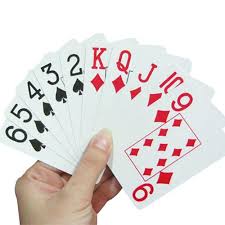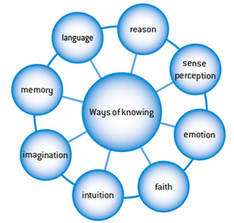Activity 1 - Finding patterns in the natural sciences
|
Time: 45 min
Task: Your group must attempt to guess the pattern that your teacher is using to accept or reject playing cards.
|
- If you were to describe the process you used to find the pattern in the format of a flowchart, what might it look like?
- Can you make links from your flowchart to this example of a scientific method?
- Two of the fundamental features of the scientific method are repeatability and falsification. How might you have used these in the game? Why are they important?
- In this game, you can be 100% certain that you are correct because the teacher can tell you. Is this true in the natural science as an area of knowledge?
Activity 2 - Ways of knowing in the natural sciences (from old TOK syllabus)
|
Time: 15 min.
Task: Throughout the scientific method we may rely on a number of ways of knowing to help us. For the following scientific contributions, can you explain the link between the science and the role of the WOKs?
|
Activity 3 - The scientific method
|
Time: 5 min.
Task: Can you suggest which features/concepts of the scientific method might fit in this concept map? |


